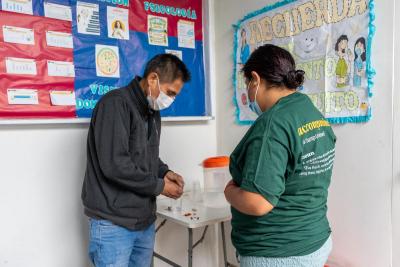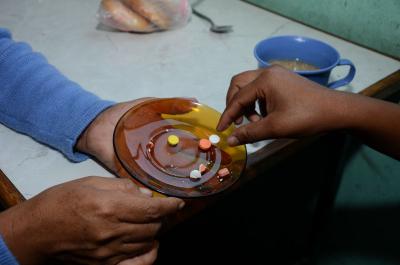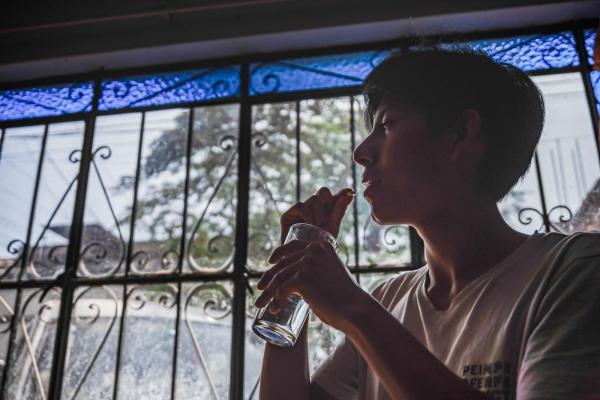The recent expansion of the Petitorio Nacional Único de Medicamentos Esenciales (PNUME) of the Ministry of Health (MINSA), which includes new drugs for the treatment of tuberculosis, marks a milestone in Peru, as it ensures their availability and accessibility in the national healthcare system.
This is according to Judith Jiménez, head of the Tuberculosis (TB) Program at Socios En Salud, and Dr. Rafael Durand, of the SES Polyclinic.
For both experts, the incorporation of these new drugs means that they will be “regulated and can be acquired and distributed by the State, guaranteeing that TB patients can receive effective and modern treatments in accordance with international guidelines.”

Con la inclusión de nuevos medicamentos para la TB en el PNUME, los pacientes podrán acceder a tratamientos efectivos y modernos alineados a guías internacionales.
Foto de SES
What are the new drugs and what are they for?
The new drugs included in the UNEP to treat TB are as follows:
Rifampicin 75mg / Isoniazid 50mg / Pyrazinamide 150mg (Combined Fixed Dose (CFD) dispersible tablet)
Etambutol 100mg (dispersible tablet)
Rifampicin 75mg / Isoniazid 50mg / Pyrazinamide 150mg (Combined Fixed Dose (CFD) dispersible tablet)
Rifampicin 75mg / Isoniazid 50mg (dispersible tablet in DFC)
Isoniazid 300mg /Rifapentine 300mg (DFC)
Delamanid
Pretomanid
Among them, dispersible tablets for children weighing less than 25 kilos who are diagnosed with sensitive TB, as well as combinations in DFC format, stand out, as they allow for better tolerance, dosing and adherence to treatment in this age group, according to Durand and Jimenez.
In addition, key drugs such as delamanid and pretomanid contribute to the treatment of multidrug-resistant (MDR-TB) and pre-extensively drug-resistant (pre-XDR) TB. Jimenez highlights that these drugs increase efficacy in complex cases, reduce dropouts and improve cure rates, strengthening the fight against resistant forms of TB.
Impact on the fight against resistant TB
The incorporation of these drugs also opens the door to shorter and more effective TB treatment regimens, such as the endTB scheme. This regimen, which this year has already been implemented by MINSA in 112 people with TB, reduces therapy time to nine months and dispenses with the use of injectables.
Jiménez and Durand also emphasize that this new MINSA measure could have the following impact on the fight against resistant TB:
Reduction of resistance: the availability of more effective treatments can prevent the development of new resistance to the disease.
Increased cure rate: better drugs and regimens reduce therapy dropouts and improve success rates.
Strengthening the health system: this change positions Peru as a leader in the fight against resistant TB, ensuring that public policies are aligned with international best practices.
However, its success will depend on proper implementation. According to specialists, MINSA will have to train health personnel in the correct use of the new treatments and ensure their distribution in the neediest regions.

El delamanid y el pretomanid destacan entre los nuevos fármacos incorporados al PNUME, pues contribuyen en los tratamientos de formas de tuberculosis resistentes.
Foto de SES
The role of the community and Socios En Salud
Communities play a central role in the adoption of these advances. Jimenez and Durand point out that the Directorate of Integrated Health Networks (DIRIS) and the Regional Health Management (GERESA) must project needs and request medicines from MINSA.
In parallel, it is crucial to socialize the benefits of these treatments and drugs in the communities and among local health stakeholders.
For its part, Socios En Salud strengthens these efforts through training and technical assistance. “SES helps new treatments reach those who need them most, strengthening the system’s commitment to the fight against tuberculosis,” the experts conclude.
If you would like to receive more information about our activities, you can subscribe here. Join our movement for health!
